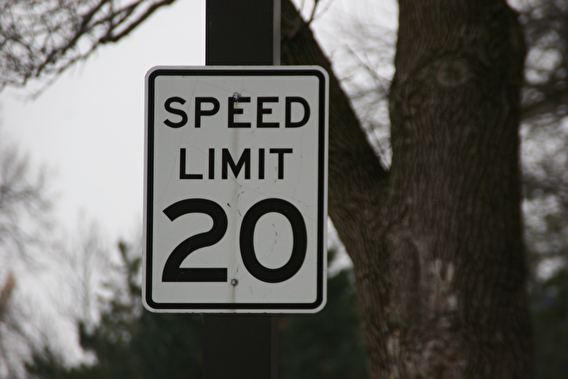
Transportation agencies continuously seek ways to reduce unsafe speeds. It’s not clear, however, if simply posting a new speed limit actually causes drivers to slow down. An LRRB-funded study that monitored driving speeds before and after a change reveals that lower limits may not, at least initially, cause drivers to slow down.
Before 2019, the statutory speed limit on urban roads in Minnesota was 25 mph to 30 mph. New legislation now allows cities to establish lower limits on certain streets more easily. A city may make blanket speed limit changes on many streets within its jurisdiction if proper procedures are followed and the new speed limits are posted.
Seeing an opportunity to use the change in speed limit law as a natural experiment, the Minnesota Local Road Research Board wanted to study if lowering the posted speed limit—without other changes in the roadway environment or increased enforcement—would alter actual driving speeds. Past studies have consistently found that only changing posted speed limits does not appreciably change driving speeds.
The City of St. Louis Park was planning a citywide speed limit change and agreed to partner with researchers to analyze driving speeds before and after the posted changes. Data from traffic counters allowed speed calculations on 24 streets, some with speed limit changes and others used for comparison purposes. On average, speeds decreased 1 mph to 2 mph—considerably less than the speed limit changes—on streets where the speed limit changed and on those where the speed limit remained the same.
“While this study presented a unique opportunity to evaluate the impact of the new municipal speed limit authority, it may be that speed limits ought to reflect a roadway’s context and geometry,” says Victor Lund, traffic engineer with St. Louis County Public Works and the project’s technical liaison.
The researchers, led by Professor Gary Davis of the University of Minnesota, noted that driving is a habitual behavior. Many of the drivers on the sample roads may drive these roads regularly and might need time to consciously recall and choose to follow the lower speed limit before a new habit develops. The researchers recommend that comparable analysis be conducted in several years to track any development of new habits.
Learn more:
- Impact of Speed Limit Changes on Urban Streets, LRRB/MnDOT, 2023